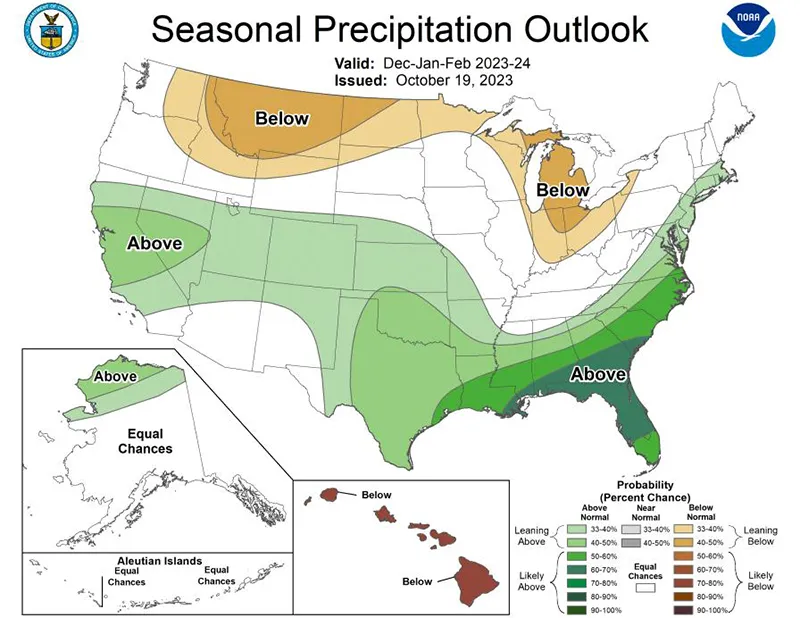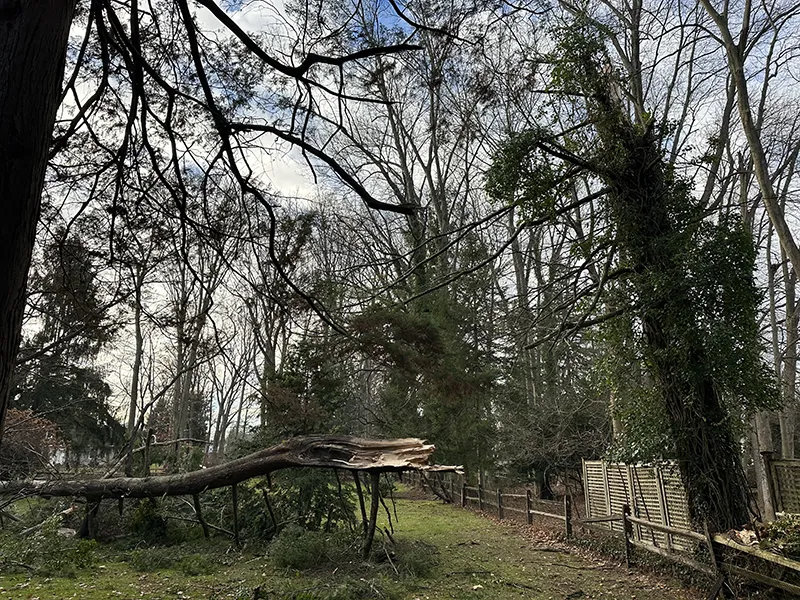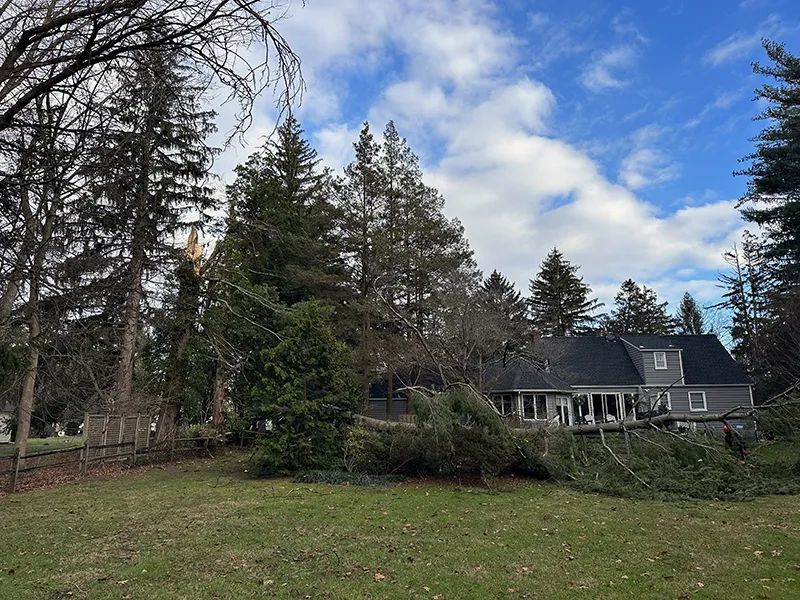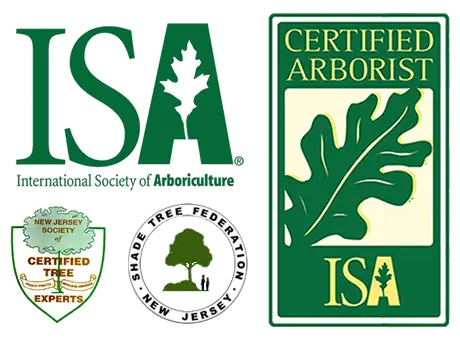In This Article ...
El Niño Brings Damage to Middletown Trees

El Niño, a climate pattern characterized by the warming of ocean waters in the central and eastern Pacific, significantly influences weather patterns globally, including in Middletown, NJ. This phenomenon can lead to a range of meteorological effects, such as increased precipitation, warmer temperatures, and intensified storm activity, all of which can adversely impact tree health and stability.
In Middletown, the influence of El Niño often translates into wetter conditions. Excessive moisture can weaken tree roots and soil structure, making trees more susceptible to being uprooted during strong winds. Additionally, the higher-than-average temperatures can stress the trees, particularly those adapted to colder climates. This stress can manifest in various ways, such as reduced resistance to pests and diseases, which further compromises their ability to withstand adverse weather conditions.
Moreover, El Niño’s tendency to intensify storm systems means that trees in Middletown are more likely to face severe windstorms. Such storms can cause physical damage to trees, like broken branches or split trunks, especially in trees that haven’t been properly maintained or are already in a weakened state.
To mitigate these risks, it’s crucial for tree owners in Middletown to be proactive. Regular tree care, including proper pruning, health assessments by qualified arborists, and ensuring good soil drainage, can help reduce the potential damage caused by El Niño-induced weather patterns. Additionally, understanding the specific needs of different tree species and taking preventive measures before the El Niño season can greatly enhance the resilience of these natural assets against the challenges posed by this climatic event.
Middletown's Strong Winter Winds
In Middletown, NJ, the winter season often brings with it strong and gusty winds, which can pose a significant threat to the health and stability of trees. As an arborist, it’s important to understand how these winds can impact trees in various ways.
One of the primary ways wind affects trees is through physical stress. Strong winds can cause branches to sway excessively, leading to breakage or even uprooting in severe cases. This is particularly true for trees that are already weakened by disease, age, or previous damage. The type of tree also plays a role; some species are more susceptible to wind damage than others.
Interestingly, not all wind is the same. There are gusty winds that come in short, powerful bursts, and there are sustained winds that maintain their strength over a longer period. Both can be harmful, but gusty winds are often more likely to cause immediate, visible damage, such as broken branches or fallen trees.
Another key aspect to consider is the wind’s threshold for causing damage. Generally, winds that exceed 20-25 mph start to pose a risk to trees, especially those that are tall or have a large canopy. However, this can vary depending on the tree’s health, species, and root system.
What’s often overlooked is the internal damage that winds can cause to trees. This includes stress cracks within the trunk, root strain, and even disruptions in the tree’s vascular system, which can affect its ability to transport water and nutrients. Such damage might not be immediately visible but can significantly impact the tree’s long-term health.
In light of these challenges, it’s essential for tree owners in Middletown to regularly inspect their trees, especially after heavy winds, and to seek professional advice if they notice signs of damage or instability. Proactive measures, such as pruning, can also help in reducing the risk of wind damage. Remember, a healthy tree is more resilient and can better withstand the forces of nature, including those strong winter winds.
The Impact of Wind on Your Trees

When discussing the impact of wind on trees, it’s essential to understand that trees are not just passive victims of the weather. They are living, dynamic organisms that interact with their environment in complex ways. In Middletown, NJ, where winter weather can bring strong winds, understanding this interaction becomes crucial for tree care and safety.
Firstly, let’s consider the obvious effects of wind: physical damage. Strong winds can break branches, uproot trees, and cause immediate and visible harm. However, the story doesn’t end there. The wind also exerts a subtler influence on trees. As trees sway in the wind, they experience stress at their roots and trunk. Over time, this can lead to structural weaknesses that are not immediately visible.
It’s important to note that not all trees respond to wind in the same way. Younger, more flexible trees might bend and sway, while older, more rigid trees are at a greater risk of snapping. The species of the tree also plays a role; some are naturally more wind-resistant than others.
Another less obvious effect of wind is on the tree’s root system. When a tree is constantly buffeted by wind, its roots can become loosened in the soil, reducing the tree’s stability and making it more susceptible to being uprooted during particularly strong gusts.
Lastly, it’s crucial to understand the hidden, internal damage wind can cause. This includes micro-cracks in the wood, which weaken the tree structurally, and can lead to disease or pest infestation as these cracks provide an entry point for pathogens and insects.
As an arborist, it’s part of my job to assess trees for these less obvious signs of wind damage and to advise on care and maintenance to mitigate these risks. Regular tree inspections, proper pruning, and choosing the right tree species for the local environment can all help in protecting your trees from the effects of wind. Remember, a tree that’s well-cared-for is not only safer but also enhances the beauty and value of your property.
Understanding Different Wind Types and Their Effects

Firstly, it’s important to recognize that not all winds are created equal. Gentle breezes, common during spring and summer, generally pose little threat to trees. However, as an arborist, I pay close attention to stronger wind patterns, especially those associated with seasonal storms or sudden gusts. These winds can exert significant pressure on trees, testing their structural integrity.
The type of wind also matters. For instance, sustained winds, which blow continuously from one direction, can gradually weaken one side of a tree over time, making it more susceptible to damage. On the other hand, gusty winds, which are common in winter storms in places like Middletown, can cause immediate and unpredictable damage. These sudden bursts of wind can snap branches, uproot trees, or cause trees to lean dangerously.
Another key aspect is the direction of the wind. Trees often grow in a way that counters prevailing winds, which in Middletown might typically come from the northwest in winter. However, when winds come from unusual directions, trees are less adapted to handle them, increasing the risk of damage.
Lastly, it’s essential to consider the unseen effects of wind. While broken branches and uprooted trees are obvious, wind can also cause internal damage to trees, such as micro-tears in the wood or root damage, which might not be immediately visible but can affect the tree’s health and stability in the long run.
As an arborist, part of my job is to assess trees for these hidden vulnerabilities and advise on appropriate care or preventative measures. This might include pruning to reduce wind resistance, staking younger trees, or even recommending the removal of trees that pose a high risk of wind damage. In Middletown, with its varied weather, such preventive measures are especially important to ensure the health and safety of the urban forest.
How Strong Does Wind Need to Be to Harm Trees?

When considering the strength of winds needed to harm trees, it’s important to understand that various factors play a role. Trees can be affected by winds of varying speeds, depending on the tree’s health, species, and age.
1. Wind Speed Thresholds: Generally, winds of 20-25 mph can start to cause noticeable effects on trees. These effects may include minor branch movement or leaf fluttering. However, as observed in Middletown, NJ, where wind speeds have reached up to 22 mph recently, such conditions typically don’t cause significant harm to healthy, mature trees.
2. Tree Vulnerability: The vulnerability of a tree to wind damage depends on several factors. Younger, more flexible trees might better withstand high winds, whereas older or diseased trees could be more susceptible. Species with shallow root systems are also at greater risk during high winds.
3. Disease and Damage: A tree already weakened by disease, damage, or poor environmental conditions is more likely to suffer harm at lower wind speeds. In some cases, even moderate winds of around 30 mph can cause branches to break or trees to topple if they are not in good health.
4. Internal Damage: It’s not just about branches falling; strong winds can cause internal stresses in trees. This can lead to unseen damage within the trunk or root system, which might not be immediately apparent but can significantly affect the tree’s long-term health and stability.
5. Protective Measures: As an arborist, it’s crucial to advise on protective measures. Regular tree maintenance, like pruning and health assessments, can help reduce the risk of wind damage. Understanding local weather patterns, like those in Middletown, NJ, also aids in preparing and protecting trees from potential wind damage.
In summary, while specific wind speeds can indicate danger, the overall health and type of tree, along with regular maintenance, are critical factors in determining a tree’s resilience to wind damage.
How To Protect Your Trees From Wind Damage

Protecting your trees from wind damage is crucial, especially in areas like Middletown, NJ, where recent weather patterns have shown a mix of fluctuating temperatures and notable wind speeds. As an arborist, I can offer some insights and practical steps to safeguard your trees against wind-related harm.
First, understanding the structure of your trees is key. Trees with dense canopies are more susceptible to wind damage due to the ‘sail effect,’ where the wind catches the leaves and branches, increasing the likelihood of breakage. Regular pruning helps reduce this risk. Pruning should be done strategically to maintain the tree’s natural shape and improve its resilience against strong winds. Remember, over-pruning can be just as harmful as not pruning at all.
Another crucial aspect is the health of the tree. Healthy trees are more likely to withstand wind stress. Regularly inspect your trees for signs of disease or decay, particularly in the trunk and main branches. Weak or diseased trees are more likely to break or topple in strong winds. If you’re unsure about the health of your trees, consulting a professional arborist for a health assessment is a wise decision.
Staking young or newly planted trees provides additional support during high winds. However, it’s essential not to keep the tree staked for too long as it needs to develop its own strength and flexibility. Usually, one to two years of staking is sufficient.
Windbreaks can also offer some protection, especially in open areas. Planting shrubs or setting up fences can reduce wind speed and provide a buffer for your trees. This is particularly effective in protecting young or vulnerable trees.
Lastly, understanding the specific types of trees in your yard and their individual needs is vital. Some species are more resistant to wind damage than others. In Middletown, NJ, where winds can reach significant speeds, choosing the right tree species can make a considerable difference in minimizing wind damage.
In summary, regular maintenance, strategic pruning, monitoring tree health, proper support for young trees, and the use of windbreaks are all effective strategies to protect your trees from wind damage. Each tree is unique, and understanding its specific needs will go a long way in ensuring its health and longevity, even in the face of challenging weather conditions.
Schedule Your Seasonal Tree Service
Call Now To Schedule Service

